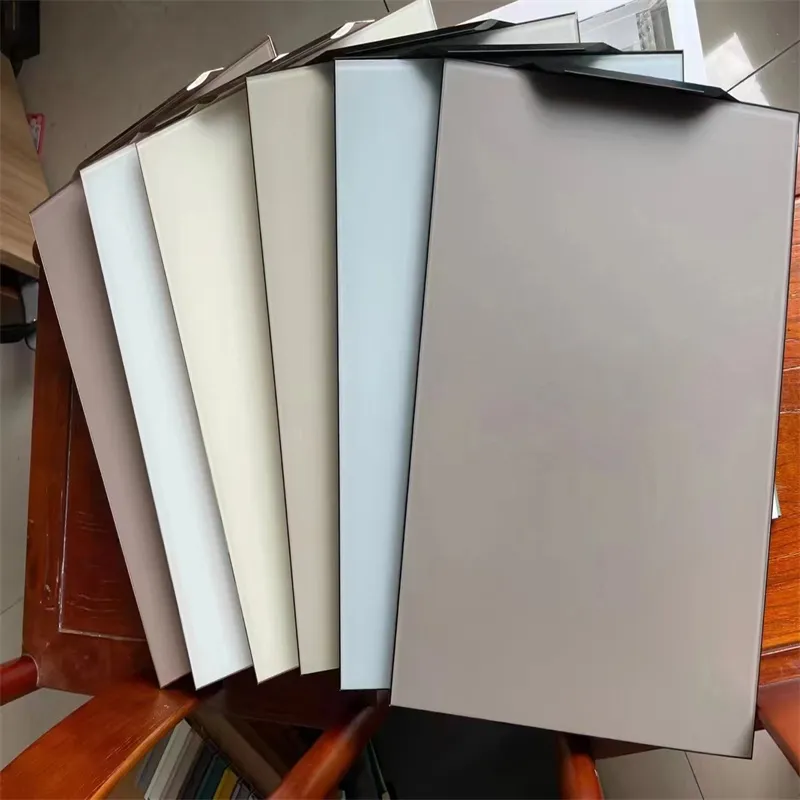10 月 . 13, 2024 23:28 Back to list
Applications and Benefits of Laminated Glass in Modern Construction and Design
What is Laminated Glass Used For?
Laminated glass is a versatile and innovative building material that has found application in various industries due to its unique properties. It consists of two or more layers of glass that are bonded together with an interlayer, typically made of polyvinyl butyral (PVB) or ethylene-vinyl acetate (EVA), creating a strong and resilient structure. This article will explore the diverse uses of laminated glass and the benefits it offers.
1. Safety and Security
One of the most significant applications of laminated glass is in safety and security. The interlayer holds the glass fragments together in case of breakage, reducing the risk of injury from sharp shards. This property makes laminated glass an ideal choice for applications such as
- Automotive Windows Laminated glass is commonly used in windshields, where it protects passengers by preventing glass shards from scattering during an accident. - Building Facades and Skylights Laminated glass is often used in commercial and residential buildings to enhance safety, providing extra protection against natural disasters and vandalism.
2. Sound Insulation
Another remarkable feature of laminated glass is its effective sound insulation capabilities. The PVB interlayer absorbs sound vibrations, making it an excellent choice for noisy environments. This property makes laminated glass particularly useful in
- Residential Buildings Homeowners in busy urban areas often select laminated glass for windows to reduce noise pollution and improve comfort. - Office Buildings Companies may use laminated glass in conference rooms and private offices to create a quieter work environment, enhancing productivity.
3. UV Protection
Laminated glass provides protection against harmful UV rays, which can cause skin damage and fade interior furnishings. The interlayer can block up to 99% of UV radiation, making it suitable for applications in
- Museum Displays Artwork and artifacts are preserved from harmful sunlight exposure by using laminated glass in display cases
. - Retail Showrooms Businesses can protect their products from fading while allowing ample natural light into retail spaces.what is laminated glass used for

4. Aesthetics and Design Flexibility
Laminated glass offers significant design flexibility, enabling architects and designers to create stunning visuals without compromising safety or performance. It can be manufactured in various colors, textures, and thicknesses. Its aesthetic uses include
- Glass Railings and Balconies Laminated glass can enhance the beauty of architectural features while ensuring safety in high-rise buildings. - Decorative Partitions Innovative designs can be achieved using laminated glass, allowing for the creation of striking interior spaces in homes, offices, and commercial buildings.
5. Energy Efficiency
The use of laminated glass contributes to energy efficiency, particularly when combined with insulating glass units. By reducing heat transfer, laminated glass helps maintain comfortable indoor temperatures and can lower heating and cooling costs. Applications include
- Energy-Efficient Windows Homeowners and builders are increasingly opting for laminated glass windows, which effectively insulate against temperature fluctuations. - Green Building Projects Laminated glass is a popular choice in sustainable architecture, aligning with energy efficiency goals that reduce environmental impact.
6. Automotive and Transport
Beyond building applications, laminated glass is prevalent in the transportation industry. Aside from automotive windshields, it is used in
- Public Transit Buses and trains use laminated glass for windows to enhance passenger safety and comfort. - Aircraft Windows Laminated glass protects airline passengers by preventing shattering, providing additional safety at high altitudes.
Conclusion
Laminated glass serves a multitude of purposes across various sectors, from enhancing safety and security to improving sound insulation and energy efficiency. Its aesthetic appeal and design flexibility further contribute to its growing popularity in construction and design. As technology advances, the applications of laminated glass are likely to expand, continuing to provide innovative solutions for modern challenges. Whether in homes, commercial buildings, or vehicles, laminated glass is a critical material that enhances our daily lives while ensuring safety and comfort.
-
Wired Glass: A Strong and Secure Glass Solution for Various Applications
NewsNov.04,2024
-
Tinted Glass: A Stylish and Functional Choice for Modern Homes
NewsNov.04,2024
-
The Elegance and Versatility of Silver Mirrors
NewsNov.04,2024
-
The Advantages of Copper Free Mirrors
NewsNov.04,2024
-
Tempered Glass: A Reliable Choice for Modern Applications
NewsNov.04,2024
-
Pattern Glass: Stylish and Functional Glass for Modern Design
NewsNov.04,2024
Related PRODUCTS














